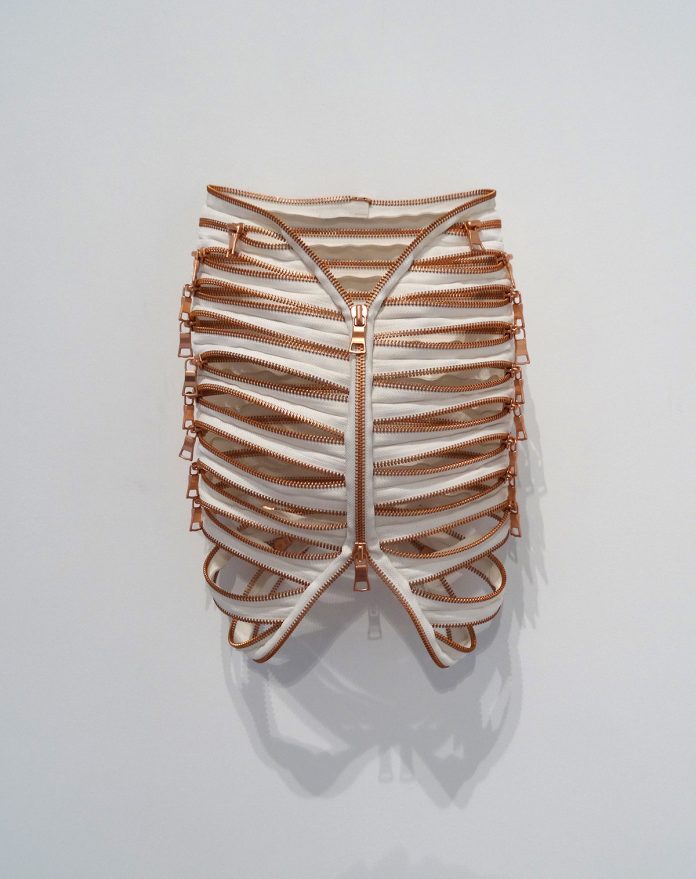Belgian artist Élodie Antoine understands the behavior of fibers, controlling them in ways to produce textile designs that are organic, fungal, and oftentimes anatomical in nature. Her anatomies emerge from taut lycra, dense felt structures, and an impressive number of zippers. The pieces are as much a reflection of the numerous tissue types in the human body as the textiles themselves.
Antoine shares with Colossal her view on the connection between textiles and anatomy. “Textile is a soft material, very sensual and transformable. Felt especially is very interesting for making sculptures because it allows to make forms without sewing, without suture, like the organs of the human body,” she writes.
From a young age, Antoine remembers a fondness for textiles, saying, “using it was obvious for me as both my parents were very interested in knitting and sewing—it was all around me.” She familiarized herself with classic sewing techniques, mastering them to create contemporary forms that transcend technique and fiber. Particularly interesting are her felt sculptures that take on the form of teeth, lower limbs, bones, and other peculiar organic forms. Antoine uses a kitchen knife to slice through the unassuming masses to reveal vibrant anatomical-like cross-sections.
She currently teaches textile design at the Royal Academy of Fine Arts of Brussels (ARBA-ESA) and is represented by Aeroplastics Gallery. Keep an eye on Antoine’s latest textile endeavors, including watching her cut through her felt sculptures, on Instagram.





Left: “Sliced blue felt” (2013), © Galerie Aeroplastics

“Quilted brain” (2014), lycra and padding, 33 x 25 centimeters

“Quilted heart” (2016), red lycra, padding

























